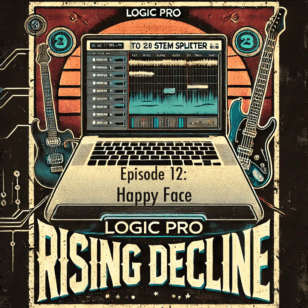
First of all, this series of blog posts is not intended to be a step-by-step guide for creating your own EdCamp–that’s what the how-to on the EdCamp Wiki is for. Rather, I want to give you a realistic view into what it takes to help put on an EdCamp. So, here’s my experience from my point of view. (Your experience planning will be quite different. You have been fairly warned.)
It all started on a dark and stormy Sunday evening. The sun has just set beneath the quiet, yet smoggy Southern California foothills when I received a direct message from @seani on Twitter: “Would you want to help organize an edcamp in San Francisco?” My enthusiastic, 140 character response: “Yes.” And so, it was borne, standing on the shoulders of giants: I started to help planEdCampSFBay.
Last January, I attended EdCampOC. This absolutely changed the way I interact with teachers, and has been the single greatest day of professional develop I have experienced. I was so stoked on the day that I blogged about it and dedicated an entire podcast episode to EdCamp. So, when @seani invited me to help out with EdCampSFBay, I knew what I was getting myself into, and was eager to assist.
The first glimpse behind the curtain of organizing an EdCamp was the shared Google Doc spreadsheet. @seani modified a copy of a planning doc from EdCampOC. This simple spreadsheet is a to-do list–organizers simply signed up for jobs they wanted. And so, the gears slowly began turning.
The next step was to create a Google Group. @dowbiggin set up the group, and invited folks that were on the spreadsheet. This is my first experience with Google Groups–so far, I’m a huge fan. When you reply to a thread, it automatically emails everyone in the group. It ends up being several emails early on, but it’s a great way to quickly communicate, delegate, and move forward in the planning process.
Meanwhile, I signed up on the spreadsheet to create the EdCampSFBay logo. I visited the official EdCamp logo page (on the EdCamp Wiki ) and downloaded the high resolution EdCamp logo. I started a thread in our Google Group for the logo, uploaded logo ideas (to my server, billselak.com, notto the Google Group), and we voted informally in the threaded discussion. @VisionsByVicky brilliantly revised the logo, and we were all in agreement.
Several other people were working on amazing things at the same time. I know that @Dave_Orphal secured our location, and @dowbiggin set up a PayPal account for donations. We suddenly had a Facebook page, and several retweets about EdCampSFBay… I don’t know what else was happening at that point, but I suppose that’s the point of helping organize an EdCamp. I do have a good excuse, though, because…
I started building the website next. Again, I started a new thread on our Google Group and got plenty of input from everyone. Since I already have my own domain with BlueHost, I could create a new WordPress website for EdCampSFBay. Essentially, it only cost $10 (for the domain name), and we had our own website up and running. For a week or so, I spent about three hours every night building and fine tuning the site. I took/borrowed/stole the basic organization of the site from the EdCampOC website, and modified it to meet our needs. I added some contact forms and we were set.
At this point, we had a:
- website
- Twitter account
- Facebook page
- PayPal account
- Google Group
At this point, I should stop and mention that I already knew nearly all the organizers from Twitter. I met many of them face-to-face at EdCampOC in January 2011. Other I met at CUE 11 in March 2011. I think it’s important to have already have a relationship with some of the organizers before planning an EdCamp. If you’re reading this and you are a teacher that’s not on Twitter, get on it! Seriously, start now–follow all the people on my @EdCampSFBay on Twitter.



